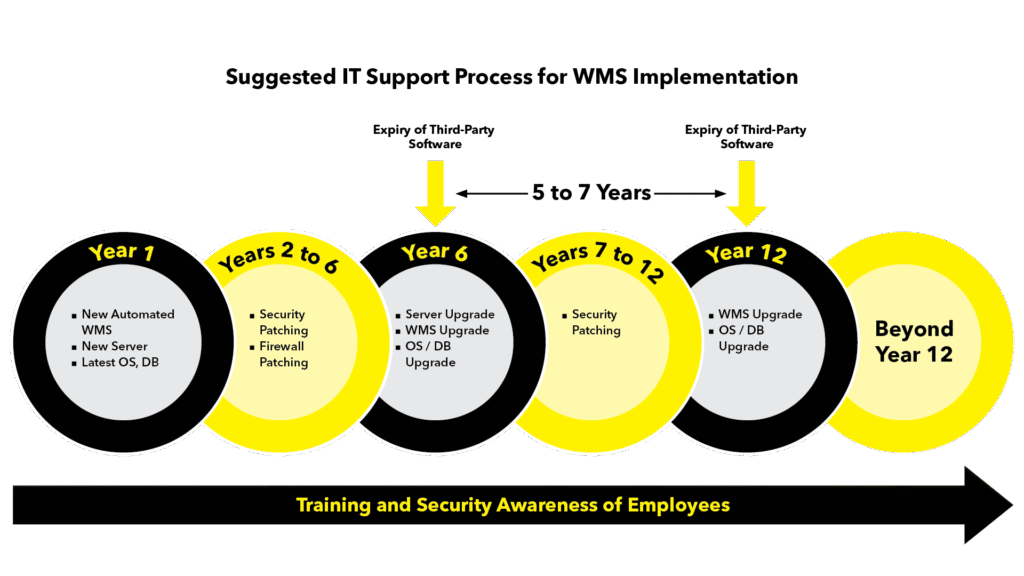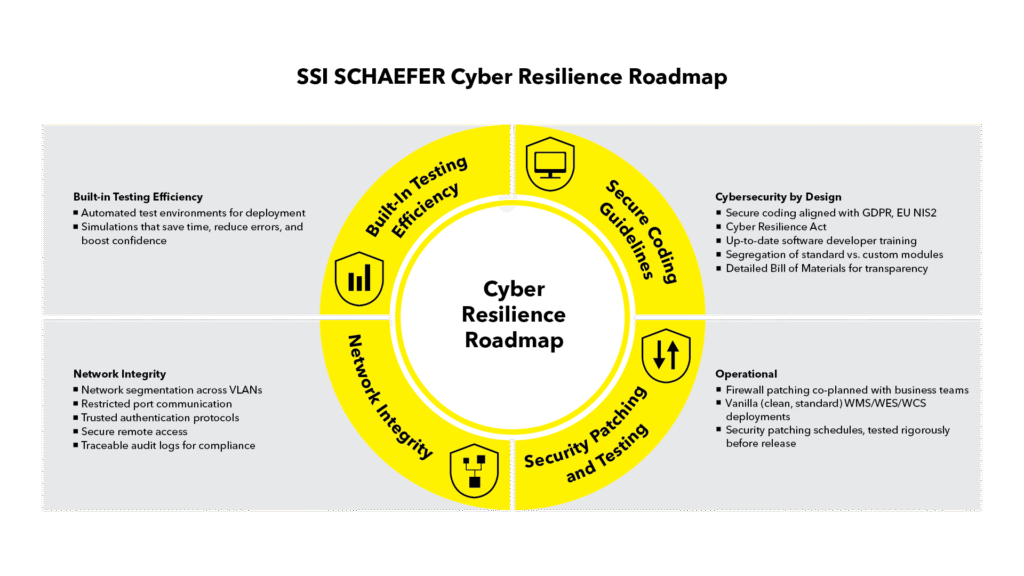
From legacy risk to resilience: How to empower your warehouse future through cyber-security for the Middle East
In today’s digital economy, warehouses are no longer just physical storage space, they are high-stakes ecosystems driven by software, where virtual activities can either bring operations to a halt or redefine the business margins.
As Middle Eastern companies modernise their supply chains, in line with the national transformation agendas such as Saudi Arabia’s Vision 2030 and the UAE’s Operation 300 Billion, one fact that is unavoidable is that cyber-resilience isn’t an option but a key to achieving these goals.
Airyn Ong, Head of Software for APAC and MEA, SSI SCHAEFER said, “Today, cyber-resilience is more critical than ever to drive the success of warehouse software systems. Our Chief Information Security Officerconstantly reminds us that cyberattack isn’t a question of if, but of when”.Warehouse systems are no longerone-off install-and-forget solutions,but rather it is an ongoing exercise to ensure the whole eco-system is secure. Some of these activities includelife-cycle planning, patching, network segmentation, but most importantly, having the right supplier who can secure solutions throughout the life of the system and enable the business tomitigate the risk of cyberattack.
The state of play: modern demands, legacy infrastructure
Across the Middle East, automation, artificial intelligence (AI), and digital control systems are gaming the system, redesigning business processes, and transforming the way businesses operate. Yet, beneath the electronic highway, a glowing threat resides – Legacy systems still dominate many companies’ software backbone. According to CyberDB, globally, 70 to 80% of the IT budgets are consumed by maintaining outdated systems.
In the Middle East, sectors such as oil and gas and finance allocate 60% to 70% of their IT budgets to maintaining legacy systems, which is consuming a significant portion of the budget. This pattern of keeping inherited systems runningis echoed in the logistics realm – all to avoid a higher capex or unexpected disruption.
For years, many companies could get by with “if it isn’t broken, don’t fix it.” But today, cyber resilience is no longer a back-office concern. Data protection laws like GDPR, new mandates like EU NIS2 and the Cyber Resilience Act,and increasing ransomware attacks are reshaping the playing field. Legacy systems—once reliable—are now liabilities.
The real-world challenge: modernising at scale
Transitioning from legacy to modern systems is no small feat. For large enterprises, the shift from store ordering systems to ERP, to Warehouse Management Systems (WMS), and then to automation controllers like WES/WCS can take years.

Take SSI SCHAEFER’s project in one of the countries in APAC-MEA. When launching automation, the client simultaneously upgraded its software stack:
Year 1–2: Laying it Core ERP backbone
Year 3: Implemented SSI SCHAEFER WES
Year 4–5: Surrounding the system with upgrades and process alignment
“We often recommend a phased approach because it allows the business to keep running while preparing the foundation for automation and resilience,” said Airyn Ong.
“There’s no one-size-fits-all. A big overhaul offers speed but carries high risk—cost, downtime, staff disruption. A phased transformation, though slower, allows for Sandbox testing and rollback options, Integration with existing infrastructure, and then Gradual adoption and employee training.” The most successful transitions, Airyn Ong notes, are guided by a clear patching plan, modular design, testing protocols and most importantly, robust change management plan. A system’s upgrade or migration is not just about the technology, but also about the people. With insufficient or lack of proper change management plan, the transformation will fail.
Digital shift isn’t unique to the Middle East, it is aglobal challenge even for regional operators
“25 Case Studies of Companies That Mastered Supply Chain Management” by AllMeld cited multinational conglomerate General Electric (GE), which recently overhauled its global supply chain. GE significantly enhanced its supply chain operations by integrating digital twin technology – a virtual replica of physical assets and processes that enables real-time monitoring, simulation, and analysis. This innovation enables GE to simulate disruptions, optimise resource allocation, and make data-driven decisions proactively, thereby future-proofing complex logistics systems.
Sucha challenge isn’t unique to the Middle East. GE’s transformation reinforces a pivotallesson: resilience starts with visibility, modularity, and software alignment—the values SSI SCHAEFER builds into every deployment. At SSI SCHAEFER, similar principles are applied in smart warehouse design, automation integration, and system transparency to help customers build an agile, data-driven supply chain.
The SSI SCHAEFER Blueprint for Cyber-Ready Warehousing

For Middle Eastern enterprises ready to evolve, SSI SCHAEFER offers more than just software—it provides a resilience roadmap:
Cybersecurity by design
- Secure coding aligned with GDPR, EU NIS2, Cyber Resilience Act
- Up-to-date software developer training
- Segregation of standard vs. custom modules
- Detailed Bill of Materials for transparency
Operational
- Firewall patching co-planned with business teams
- Vanilla (clean, standard) WMS/WES/WCS deployments
- Security patching schedules, tested rigorously before release
Network integrity
- Network segmentation across VLANs
- Restricted port communication
- Trusted authentication protocols
- Secure remote access
- Traceable audit logs for compliance
Built-in testing efficiency
- Automated test environments for deployment
- Simulations that save time, reduce errors, and boost confidence
“We are not just delivering intralogistics software. We’re delivering software you can trust when it matters most,” Airyn Ong concluded.
The only certainty in today’s warehouse landscape is change. New automation. Evolving customer expectations. Emerging cyber threats. Regulatory shifts. The businesses that will thrive are those with the right digital scaffolding — modular, secure, and future-ready. Legacy may still run in some systems, but it can no longer run the strategy. With SSI SCHAEFER, the Middle East is ready to move from reactive patching to proactive resilience—one line of secure code at a time.






